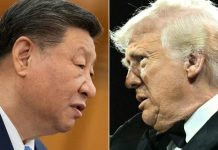Diwali has yet again seen a massive rise in sales of Chinese goods in India. From the festival-related Chinese products flooding the Indian capital’s wholesale market to the 30 to 40 per cent increase in Xiaomi’s festival sales, there are signs throughout which symbolise Indians dependence on Chinese products.
https://eurasiantimes.com/us-china-trade-war-japan-stick-market/
Indeed, not only have Indian customers long been reliant on Chinese-manufactured products, but Indian industrial development is also supported by Chinese products. China supplies roughly 90 per cent of India’s solar panels, and the country’s telecoms industry only saw accelerated growth when Chinese smartphones began to be assembled there.
In 2018, bilateral trade between China and India soured to a record $84.4 billion. Considering China has maintained a long-term, remarkable trade surplus against India, there used to be calls in the country to boycott Chinese goods. Complaints about Chinese imports may be obvious, but it is not easy for Indians to renounce economical and high-quality Chinese products.
Boycotting Chinese goods would not benefit India’s economy. For starters, Chinese goods have already entered many areas of Indian life, and are also one of the cornerstones of India’s price stability. Indian consumers favour Chinese goods that are significantly cheaper than similar Indian products.
Moreover, without the supply of affordable Chinese products, inflation in India could be worsened. This would limit the government’s room for policy manoeuvre as the economy is facing increasing downward pressure.
LTTE Days Back – 200+ People Killed in a Massive Terror Attack in Sri Lanka
India’s GDP growth has been slowing for some time, with its economy expanding at a lower-than-expected 5 per cent year-on-year in the second quarter of 2019, down from 5.8 per cent in the first quarter. The declining trend shows no sign of changing course.
Essentially speaking, India’s reliance on Chinese manufacturing emphasises the relative backwardness of its own manufacturing sector. Over the years, Indian politicians have believed that with the same cheap labour costs, India’s manufacturing sector would grow as fast as China’s and would reduce imports from China.
But the fact is that India’s manufacturing industry is still unable to provide a large number of industrial products at low costs to meet domestic needs. This, to a certain extent, reflects the bottleneck of its manufacturing development.
Despite its demographic dividend, the South Asian nation’s manufacturing sector still faces significant difficulties in aspects like infrastructure, electricity, telecommunications, transportation and finance. In this sense, the country still faces a long upward climb in its manufacturing development.
US – China Trade War Gets Nasty, Beijing to Raise Duties on US$60 Billion of US Good
There was a time when it was widely believed that India’s manufacturing sector would take off, benefiting from the industrial shift of Chinese manufacturing. With the growing costs of workers and production in China, some foreign companies opted to move out of China to seek another low-cost environment.
India was keen to lure such investment to boost its manufacturing development and lift its exports of goods. However, as the trade war unexpectedly accelerated China’s industrial shift, India was not prepared for the outflow and witnessed manufacturing jobs enter emerging economies such as Vietnam and Indonesia.
Of course, India still has high hopes for its manufacturing sector, which can be seen clearly through its “Make in India” initiative. Under the plan, the Indian government aims to increase the GDP share of its manufacturing sector from the current 16 per cent to 25 per cent by 2022, while creating 100 million new jobs during the same period.
Turkish President Erdogan Attacks India, Israel Over Kashmir & Palestine
Yet, in spite of this ambitious goal, Indians appear uncertain about how they are to achieve it, particularly as current anti-globalization sentiment doesn’t bode well for the country’s industrial development.
That being said, it is not the right time, nor is it possible, for India to reject the influx of Chinese goods. A mindless boycott would only backfire.
Originally Published By The Global Times




